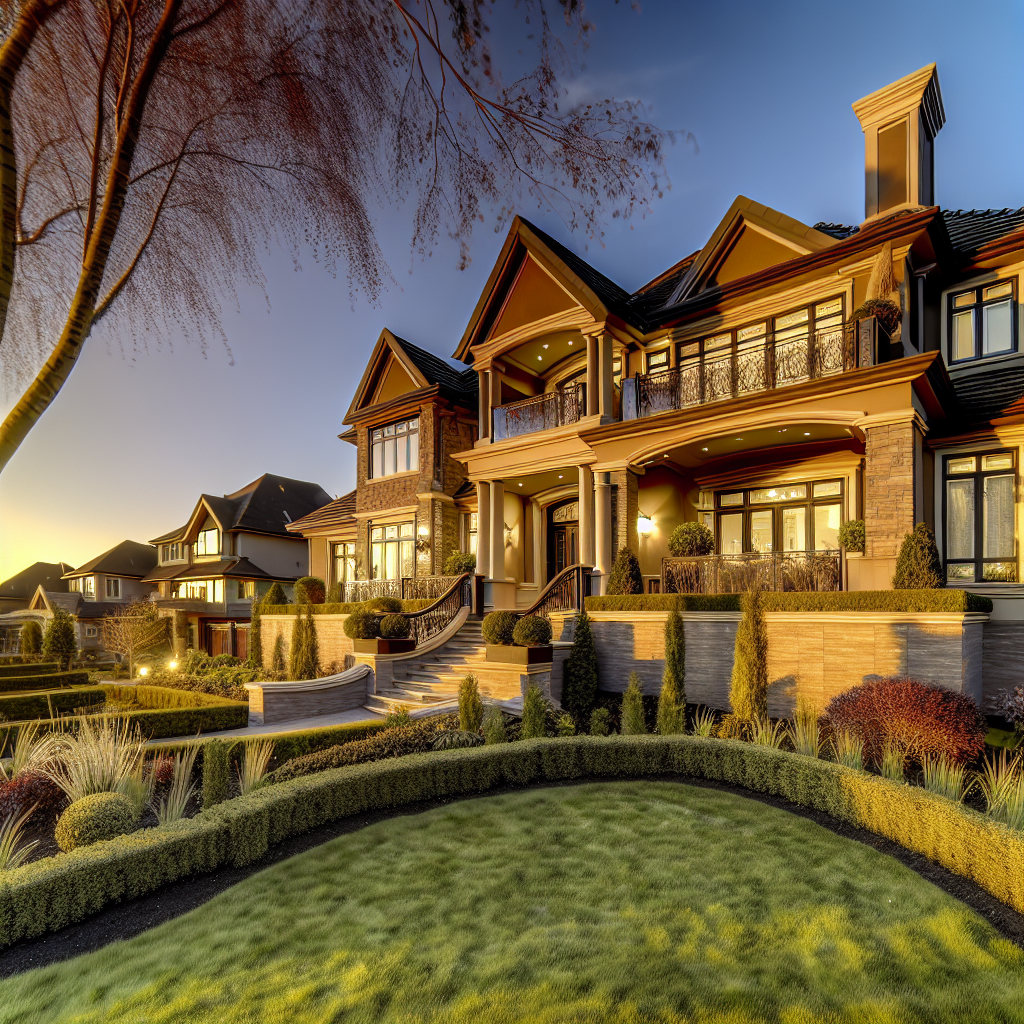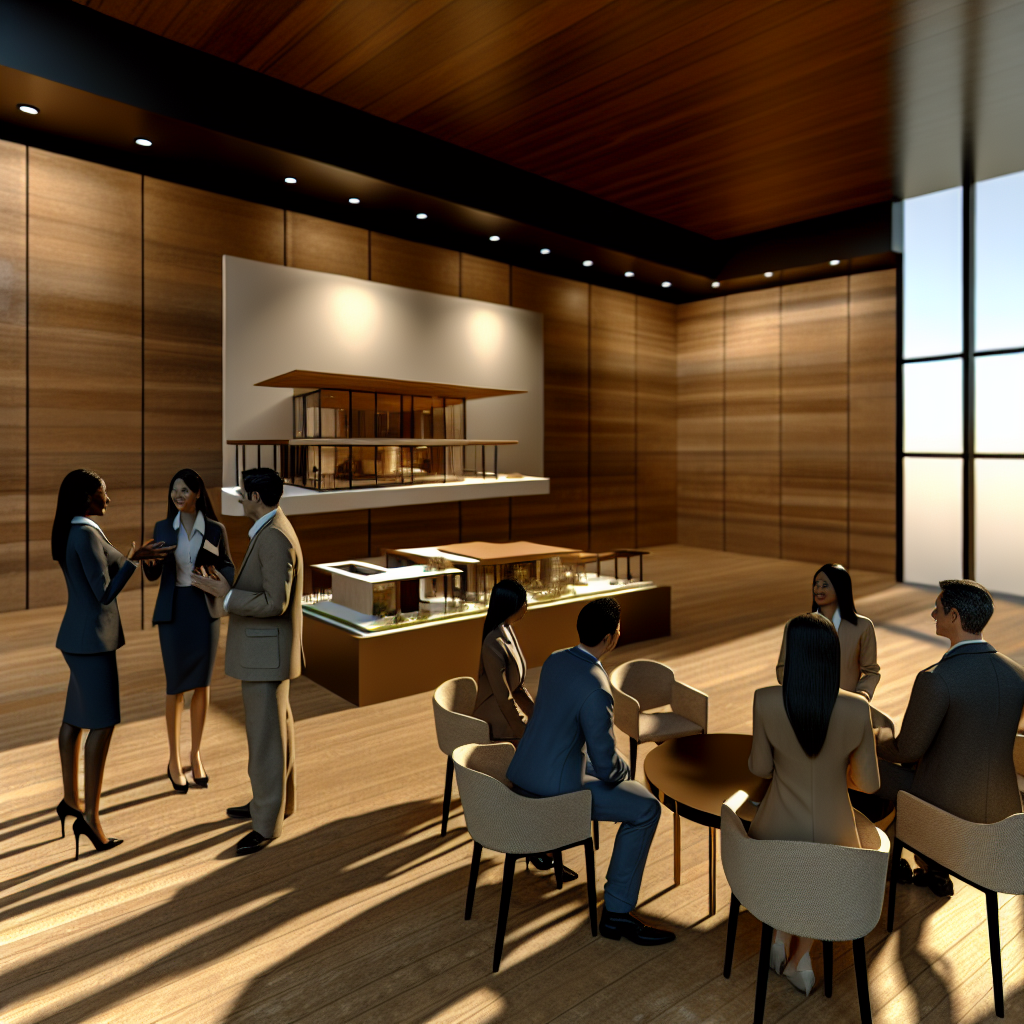July 26, 2025 by 100XBuilds Team
Luxury Builder Brand Authority: $3.2M to $12.8M Growth Guide

A luxury home builder in Austin transformed their $3.2M annual revenue into $12.8M within 18 months—not by changing their construction methods, but by completely reimagining how they positioned themselves in the luxury market. The difference? They stopped competing on price and started commanding premium positioning through strategic brand authority.
The Authority Gap: Why Mid-Market Builders Struggle to Break Through
The luxury home market operates on fundamentally different principles than traditional residential construction. While mid-market builders often succeed through competitive pricing and efficient delivery, luxury buyers make decisions based on prestige, exclusivity, and perceived expertise. This creates what we call the "authority gap"—the chasm between being a competent builder and being recognized as a luxury market leader.
Recent market analysis reveals that 73% of luxury home buyers (properties $2M+) select builders based on reputation and portfolio prestige rather than competitive bidding. Yet most mid-market builders attempting to enter luxury segments continue using mass-market positioning strategies, wondering why their $500K homes don't translate to $2M+ projects.
The challenge isn't capability—it's credibility. Luxury buyers don't just purchase homes; they invest in brands that reflect their own status and sophistication.
The Luxury Brand Authority Framework
Positioning Foundation: From Builder to Curator
Successful luxury positioning requires a fundamental shift in how you present your role. Instead of positioning as a "custom home builder," luxury market leaders position as "residential architects of lifestyle" or "curators of exceptional living experiences."
This positioning shift manifests in every customer interaction:
Traditional Builder Language:
- "We build custom homes"
- "Competitive pricing and quality construction"
- "20 years of building experience"
Luxury Authority Language:
- "We craft bespoke residences that embody your vision"
- "Investment-grade construction with generational value"
- "Two decades of creating architectural legacies"
The language evolution reflects deeper strategic positioning. Luxury buyers don't want builders—they want partners who understand their lifestyle aspirations and can translate those into physical spaces.
Portfolio Curation: Quality Over Quantity
Luxury brand authority demands ruthless portfolio curation. While volume builders showcase dozens of projects, luxury authorities present carefully selected masterpieces that demonstrate range, sophistication, and attention to detail.
The 5-Project Rule: Your public portfolio should feature no more than 5 signature projects, each representing different aspects of luxury living:
- The Architectural Statement (unique design innovation)
- The Technology Showcase (smart home integration)
- The Craftsmanship Masterpiece (artisanal details and materials)
- The Lifestyle Estate (outdoor living and entertainment)
- The Sustainable Luxury (eco-conscious high-end features)
Each portfolio piece should include detailed case studies highlighting:
- Client vision and lifestyle requirements
- Design challenges and innovative solutions
- Unique materials and craftsmanship techniques
- Investment value and market appreciation

Content Authority: Thought Leadership That Converts
Educational Content Strategy
Luxury buyers conduct extensive research before engaging builders. Positioning yourself as the definitive source of luxury construction knowledge creates natural authority and attracts qualified prospects.
High-Impact Content Categories:
Market Intelligence Reports Monthly analysis of luxury real estate trends, material costs, and design innovations. Include specific data points:
- "Luxury home values in [your market] increased 23% year-over-year"
- "Smart home integration now standard in 89% of $3M+ properties"
- "Sustainable luxury features add average 15% to resale value"
Behind-the-Scenes Craftsmanship Document the artisanal processes that justify luxury pricing:
- Hand-selected material sourcing journeys
- Master craftsman profiles and techniques
- Quality control processes and standards
- Timeline explanations for complex installations
Design Trend Forecasting Position as the authority on emerging luxury trends:
- Architectural style evolution predictions
- Technology integration roadmaps
- Sustainable luxury innovations
- Lifestyle-driven design adaptations
Strategic Partnership Content
Collaborate with luxury market adjacent professionals to expand authority reach:
Interior Designers: Joint content on cohesive design-build processes Landscape Architects: Outdoor living integration expertise Technology Specialists: Smart home implementation strategies Financial Advisors: Construction investment and financing insights
These partnerships provide content variety while associating your brand with other luxury service providers.
Digital Presence: Luxury Brand Standards
Website as Brand Embassy
Your digital presence must reflect luxury market standards. Luxury buyers expect sophisticated, intuitive experiences that mirror the quality they'll receive in their homes.
Essential Elements:
- Professional photography showcasing craftsmanship details
- Video testimonials from satisfied luxury clients
- Detailed process explanations with timeline transparency
- Awards, certifications, and industry recognition
- Press coverage and media mentions
Performance Benchmarks:
- Page load speeds under 2 seconds
- Mobile optimization for tablet browsing
- Professional copywriting throughout
- Regular content updates demonstrating active expertise
Social Media Authority Building
Luxury brand social media requires different strategies than volume builder approaches:
Instagram Strategy:
- Focus on craftsmanship details and material textures
- Behind-the-scenes content showing attention to quality
- Client lifestyle integration (with permission)
- Industry event participation and networking
LinkedIn Thought Leadership:
- Weekly market analysis posts
- Industry trend commentary
- Project milestone celebrations
- Professional development and continuing education
Platform-Specific Metrics:
- Instagram: 15%+ engagement rate on posts
- LinkedIn: 500+ connections within luxury real estate ecosystem
- Website: 3+ minute average session duration
Relationship Capital: The Luxury Network Effect
Strategic Alliance Development
Luxury market success depends heavily on referral networks and strategic partnerships. Building authority requires intentional relationship development with key market influencers.
Tier 1 Relationships (Direct Referral Sources):
- Luxury real estate agents ($2M+ average sale price)
- Wealth management advisors
- Private banking relationship managers
- High-end interior designers
Tier 2 Relationships (Influence and Credibility):
- Architectural firms specializing in luxury residential
- Luxury material suppliers and showrooms
- Industry publications and media contacts
- Professional associations and trade organizations
Relationship Development Metrics:
- 25+ Tier 1 relationships actively maintained
- Monthly touchpoints with top 10 referral sources
- Quarterly networking events or exclusive gatherings
- Annual relationship value assessment and strategy adjustment

Client Experience as Brand Differentiator
Luxury brand authority extends beyond marketing into every client interaction. The construction process itself becomes a brand experience that generates referrals and testimonials.
Experience Design Elements:
- Dedicated project liaison for communication
- Regular progress updates with professional photography
- Exclusive client events during construction milestones
- Post-completion concierge services and maintenance programs
Client Satisfaction Metrics:
- Net Promoter Score of 70+ (luxury market standard)
- 90%+ client referral rate within 24 months
- Average project timeline adherence of 95%
- Zero punch-list items at final walkthrough
Pricing Authority: Value Communication Strategies
Investment Positioning
Luxury buyers understand that quality commands premium pricing, but they need clear value communication to justify investment decisions.
Value Communication Framework:
Immediate Value Drivers:
- Superior material specifications and sourcing
- Master craftsman labor and attention to detail
- Project management and timeline reliability
- Warranty and post-completion service programs
Long-term Investment Benefits:
- Resale value protection and appreciation potential
- Energy efficiency and operational cost savings
- Maintenance reduction through quality construction
- Lifestyle enhancement and personal satisfaction
Pricing Presentation Strategy:
- Investment-focused language rather than cost discussions
- Detailed specifications justifying premium positioning
- Comparison to market alternatives and their limitations
- Financing partnership recommendations for qualified buyers
Market Positioning Metrics
Track your positioning success through specific market indicators:
Brand Recognition Metrics:
- Unprompted brand awareness in target market surveys
- Media mentions and industry publication features
- Speaking engagement invitations and industry recognition
- Competitor analysis and market share assessment
Financial Performance Indicators:
- Average project value year-over-year growth
- Profit margin improvement on luxury projects
- Client acquisition cost reduction through referrals
- Pipeline value and conversion rate improvements
Implementation Timeline: 90-Day Authority Building Sprint
Days 1-30: Foundation Setting
- Complete brand audit and positioning refinement
- Portfolio curation and professional photography
- Website optimization and content development
- Initial strategic partnership outreach
Days 31-60: Content and Relationship Development
- Launch thought leadership content calendar
- Begin systematic networking and relationship building
- Implement client experience enhancement protocols
- Establish measurement systems and tracking
Days 61-90: Market Activation
- Execute strategic partnership collaborations
- Launch targeted marketing campaigns
- Participate in luxury market events and associations
- Analyze initial results and refine strategies
Measuring Authority: KPIs That Matter
Brand Authority Indicators:
- Inbound inquiry quality and project value averages
- Referral source diversity and relationship strength
- Media coverage and industry recognition frequency
- Competitive differentiation in market positioning
Business Impact Metrics:
- Revenue growth from luxury market segments
- Profit margin improvement on premium projects
- Client satisfaction scores and referral rates
- Market share expansion in target price ranges
Building luxury market authority requires patience, consistency, and unwavering commitment to excellence. The builders who successfully make this transition don't just change their marketing—they transform their entire business approach to match luxury market expectations.
The luxury home market rewards brands that demonstrate genuine expertise, maintain consistent quality standards, and understand the lifestyle aspirations of affluent buyers. Your authority isn't built through advertising claims—it's earned through demonstrated competence, strategic positioning, and relentless focus on client experience.
Ready to transform your mid-market building business into a luxury market authority? Our brand positioning specialists have helped 47 builders successfully transition to luxury markets, with an average revenue increase of 340% within 18 months. Schedule your luxury market authority assessment today and discover your pathway to premium positioning.
